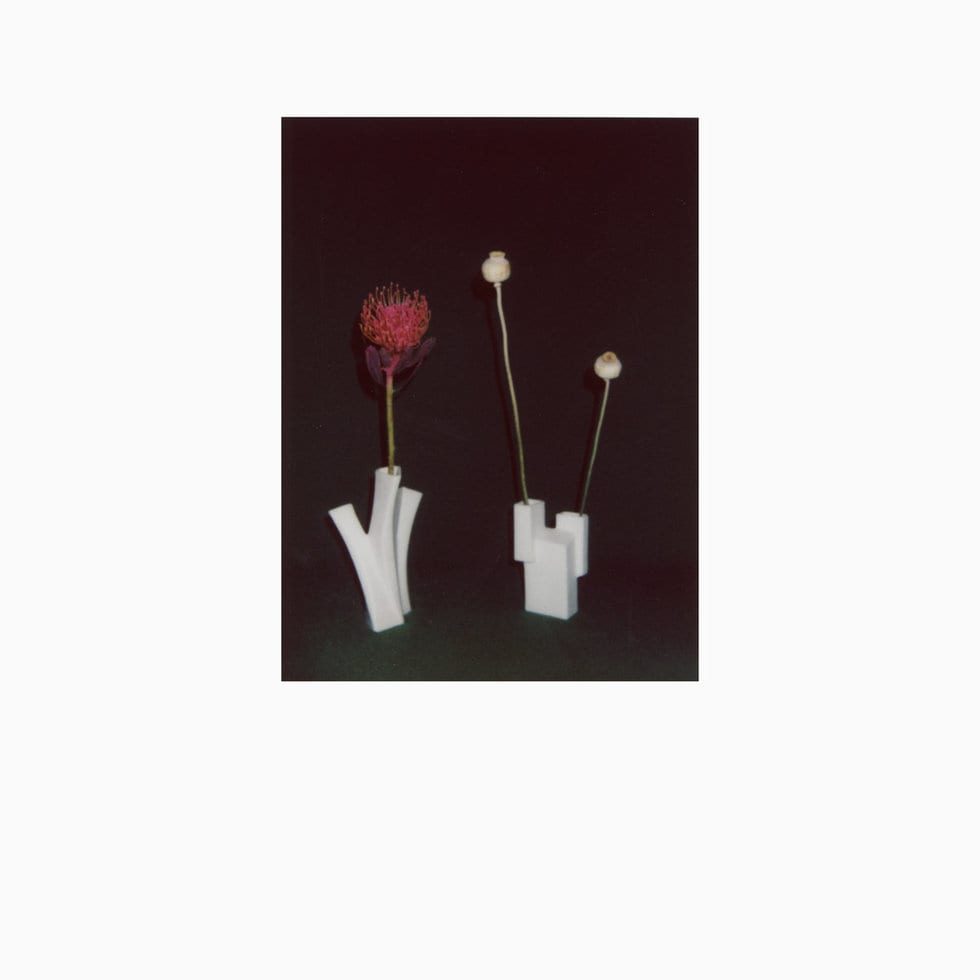
Maggie Nelson’s The Argonauts theorizes pregnancy as a becoming that which is intimate, transformative, and perhaps even queer. Ultimately, these thoughts take after the Deleuzian concept of becoming, that is the ever-dynamic process of being anew by influence, as opposed to the fallacy of being static and fixed by resemblance and categories. Or, as Nelson references Description Roland Barthes’ metaphor, “Just as the Argo’s parts may be replaced over time but the boat is still called the Argo.”
Similarly, the journey of pregnancy became a project of ontology for the experimental composer and French poet Félicia Atkinson. She describes her latest full-length The Flower and the Vessel as “a record not about being pregnant but a record made with pregnancy”. This intimate process uncovered the many possibilities of the vessel that holds the flower’s growth or the Argo that holds the changing parts. For her, it brought forth the questions of “what am I doing here? How can I connect myself to the world?”
Atkinson composed The Flower and the Vessel “with small gestures: recording my voice, recording birds, a simple melody”, as she describes. Each song applies an intense focus on the moments and sounds that are otherwise unnoticed. This fascination with negative space finds materials in what is seemingly silent or empty. On the opener “L’Après-Midi”, Atkinson softly murmurs a spoken word piece in French, but the background is as much a part of the performance as her voice. Amplified to capture her whispers, every scrape and breeze is magnified. Such media is typically known as autonomous sensory meridian response (ASMR), but Atkinson is not whispering simply to entice sensory pleasure. Rather, aware of the grand consequences of small gestures, such intense focus uncovers the interconnected becoming of microcosms and macrocosms.
Atkinson explains that her approach to negative space was inspired by Erik Satie’s Gymnopédies. As such, on many pieces, instruments and field recordings do not build melodies but rather dissipate. Much like Gymnopédies, “Moderato Cantabile” is sparse in notes, intricately exhausting each piano stroke for its entire worth. Waning open chords leave space for static to fly about, highlighting the subtle beauty of negative space. Similarly, on “Joan”, a minimal key progression begins, but only to be enveloped by distant gongs, flourishing birdsongs, and Atkinson’s careful articulations. On these pieces, the Satie-esque piano progressions act as the vessel for which we can notice and appreciate the surrounding flutters.
And so, while songs like “Linguistics of Atoms” build scarce or no melodies, its encompassing noises become the most enrapturing layers. The abstract piece opens with ringing bells, somehow both shimmering and desolate. Midway, short piano strokes join with polyphonic, dissonance, while piercing frequencies cut through the negative space. To close, Atkinson comes in and out, right to left, with stretched whispers. These disjointed streams sift through porous surfaces until they meet again for another journey on the following song “Lush”. The bells, piano, and voices become and become again. Or, as Nelson might say, this interplay reflects “a becoming in which one never becomes”.
The Flower and the Vessel closes with the nearly 19-minute epic “Des Pierres”. Atkinson recites closing words over layers of discordant guitar drones from SUNN O))) guitarist Stephen O’Malley. Truly, this is a collaboration of becoming, building, and unfolding, patiently and freely. Clouds of guitars form and scatter unfettered over rumbles of buried key progressions. Atkinson’s voice remains pronounced and sharp as always, coming and going throughout. Each evolution comes unforeseen, a product of the moment. The flower and the vessel ensue an intricate process of becoming, unencumbered by structures and welcoming all possibilities.
Atkinson tells Tiny Mix Tapes, “I am porous… the voices go and go out, and we are in flux.” Just as the Argo trades parts but maintains itself, Atkinson becomes the vessel, willing and permeable to her surroundings but maintains herself. Or rather, perhaps it’s not a matter of maintaining a singular self but rather recognizing the many possibilities of an ever-becoming self. Thus, as a whole, The Flower And The Vessel moves and evolves with every moment. Voices signify then confuse, while signals come and go. Each small gesture acts as an interconnected movement of a larger body, flourishing and unattached to any fixed meanings. Each song becomes a layer of what it means to become and become again, recognizing the interconnected process of the microcosms and macrocosms. As Atkinson explains, “even the quietest creative act ripples outward in unforeseen ways, a whisper with no fixed meaning.” Or, as Nelson concludes but also begins, “I know we’re still here, who knows for how long, ablaze with care, its ongoing song.”

